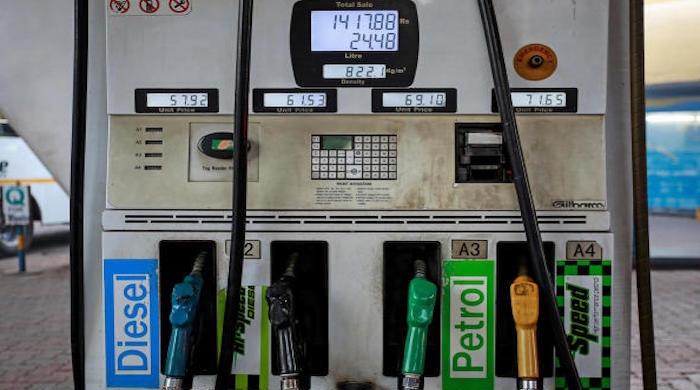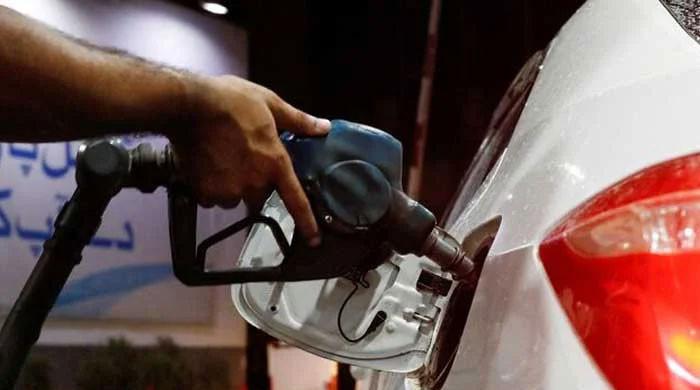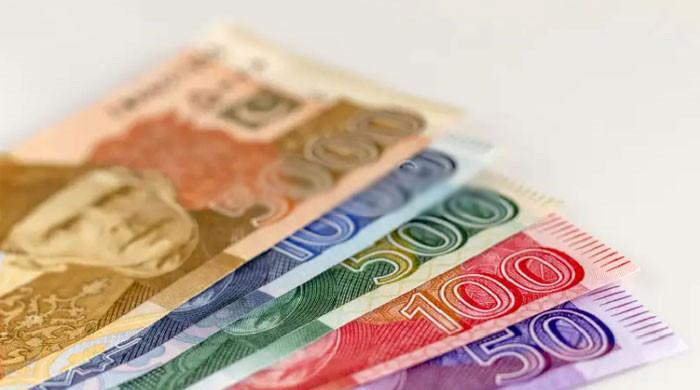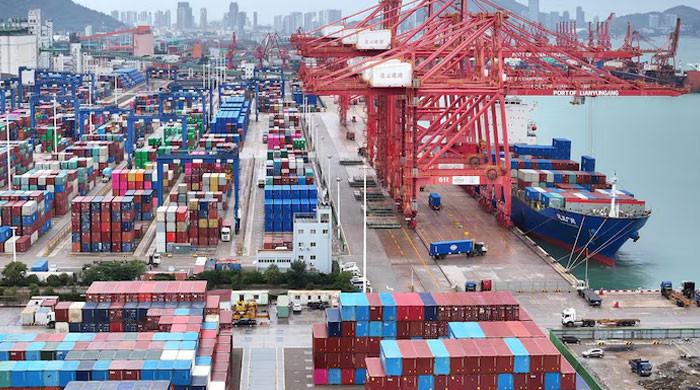Moody's downgrades five Pakistani banks' ratings; maintains negative outlook
Rating agency lowers Pakistan's real GDP growth to 0-1% for fiscal year 2022-23
October 11, 2022

- Rating agency lowers Pakistan's real GDP growth to 0-1% for FY23.
- The outlook on all banks' deposit ratings remains negative.
- Moody's notes floods exacerbated liquidity, external credit weaknesses.
LIMASSOL: Moody's Investors Service Tuesday downgraded the long-term deposit ratings to Caa1 from B3 of five Pakistani banks.
The rating agency has also downgraded the five banks' long-term foreign currency Counterparty Risk Ratings (CRRs) to Caa1 from B3.
As part of the same rating action, Moody's lowered the Baseline Credit Assessments (BCAs) of three banks to Caa1 from B3, and as a result, also downgraded their local-currency long-term CRRs to B3 from B2 and their long-term Counterparty Risk Assessments to B3(cr) from B2(cr).
The outlook on all banks' deposit ratings remains negative.
The rating agency maintained that the actions follow Moody's decision to downgrade the Government of Pakistan's issuer and senior unsecured debt ratings to Caa1 from B3, and maintain a negative outlook.
A statement issued in this regard mentioned that today’s rating actions reflect:
- Government of Pakistan's reduced capacity to support the banks has affected the banks whose ratings benefit from government support;
- High credit linkages between banks' balance sheets and sovereign credit risk, which constrains banks' Baseline Credit Assessments at the level of Caa1-rated government;
- Lowering of Pakistan's foreign currency ceiling to Caa1, which has affected the foreign currency CRRs of all rated banks.
Reduced capacity of govt to support banks
The downgrade of the two banks' local-currency deposit ratings to Caa1, from B3, reflects the reduced capacity of the Pakistani government to support the banks in case of need.
“This is indicated by the downgrade of the sovereign's bond rating to Caa1, from B3, which was driven by worsening economic outlook, increased government liquidity, external vulnerability risks in the aftermath of devastating floods that hit the country since June 2022,” the statement read.
The rating agency noted that the floods have exacerbated Pakistan's liquidity and external credit weaknesses and increased social spending needs, while government revenues were also hit.
Foreign currency ceiling lowered
Moody's has downgraded all banks' foreign-currency long-term CRRs to Caa1 from B3, to reflect the lowering of the foreign-currency ceiling for Pakistan to Caa1.
Negative outlook
According to the rating agency, the negative outlook on the bank ratings primarily reflects the rated banks' very large holding of sovereign debt securities, at between 7-14 times their Tier 1 capital, which will continue to link their creditworthiness to that of the government, whose ratings are on negative outlook.
The negative outlook also captures increased vulnerabilities on the banks' financial metrics and standalone credit profile that stem from Pakistan's challenging macro-economic and operating conditions; the latter could also lead Moody's to reassess its macro profile for Pakistan, which currently stands at "Very Weak +".
More specifically, Moody's has lowered Pakistan's real GDP growth to 0-1% for fiscal 2023 (the year ending in June 2023), while increased government liquidity and external vulnerability risks and higher debt sustainability risks suggest that the government will continue to rely on the banks, hence the credit interlinkages between the sovereign and the banks will only deepen.
Factors that could lead to an upgrade/downgrade
Moody’s said any upward rating pressure on the Pakistani banks' ratings is limited given the negative outlook. The banks' outlook could change back to stable if the sovereign rating outlook is stabilised and if the banks maintain their resilient financial performance.
Downward pressure on the bank's ratings would develop following a downgrade of the sovereign rating, reflecting the high interlinkages between the banks' credit profile and that of the government.











